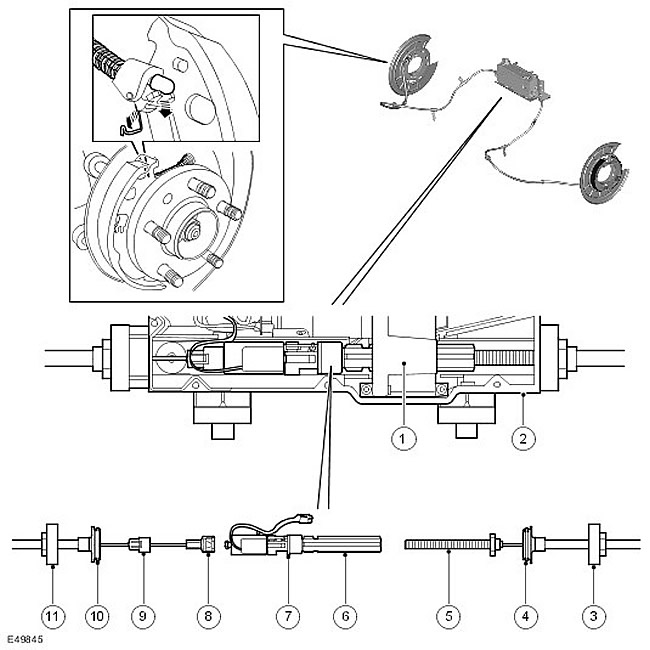
| Item name | Spare part number | Description |
| 1 | Reducer | |
| 2 | Parking brake control housing | |
| 3 | cable nut | |
| 4 | Sealing collar | |
| 5 | Threaded connection device | |
| 6 | splined shaft | |
| 7 | force sensor | |
| 8 | Block | |
| 9 | Retainer cover | |
| 10 | Sealing collar | |
| 11 | cable nut |
The brake cables are Bowden cables installed between the parking brake control unit and the drum brakes. Nuts at the ends of the outer cables attach the brake cables to the parking brake control unit and to the support plate of the respective drum brake. In each drum brake mechanism, the inner cable passes through the guide spring and is attached to the brake shoe lever with a fitting at the end of the cable. In the parking brake control unit, two internal cables are connected together by means of a force sensor and a splined shaft.
Internal cable RH (right) brake is attached to the force sensor fitting by means of "shoe" at the end of the rope; the latch cap holds the shoe in engagement with the fitting.
Inner cable LH (left) the brake is attached to the splined shaft with a threaded coupling device (with LH (left) carving); the square flange at the end of the threaded connector is located in the parking brake control housing, which prevents the threaded connector from rotating with the splined shaft.
When turning the splined shaft, the threaded coupling LH (left) the brake cable is screwed into or out of the splined shaft, which leads to a change in the effective length of the internal cables and actuates the drum brakes. Since the splined shaft can move axially in the gearbox, the load on the inner cables of the two drum brakes is balanced.
Before disconnecting the drive cable, turn off the power to the parking brake control unit. Operating the parking brake switch with the brake cable disconnected may cause the parking brake control unit actuator to jam. In addition, the parking brake may not be released for 20 minutes after the ignition is turned off. Until this time has elapsed, automatic restart cannot be eliminated.
Comments on this article